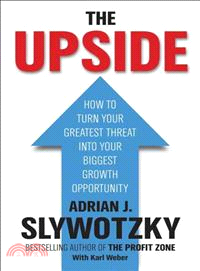| FindBook |
|
有 1 項符合
THE UPSIDE - THE 7 STRATEGIES FOR TURNING的圖書 |
 |
$ 975 | THE UPSIDE - THE 7 STRATEGIES FOR TURNING
作者:SLYWOTZKY 出版社:JOHN WILEY & SONS 出版日期:2007-07-27 規格: / 288頁  看圖書介紹 看圖書介紹
|
|
|
- 圖書簡介
One of the business world’s most innovative thinkers explains how to take a unique, counterintuitive approach to the key issue for every business – growth – by turning big threats into big opportunities. The world is moving so quickly that every business in every industry faces big threats. Risk is one of those unpleasant realities-along with death and taxes-that most people would prefer to ignore. In fact, many people do ignore it as much as possible. On the rare occasions when they think about risk, most people, including business people, adopt a fatalistic attitude. "Oh, well," they shrug, "No pain, no gain." They accept the conventional wisdom that risk and reward go together—that to get great upside results (higher-than-average profits, quantum leaps in growth), you need to take big downside risks. It's a painful but inescapable fact of life.
But there are ways to anticipate threatening changes and turn them into successes. Risk and reward are not inextricably linked. The reality is that it’s possible to reduce the risks you face at the same time as you improve the returns you enjoy. In fact, it’s not only possible but essential. The leaders of today’s most successful companies aren’t risk takers . . . they’re risk shapers. They think day and night about the risks they face and are continually working to develop and implement strategies to reduce them. Their attitude toward risk is the opposite of fatalistic-it's aggressive, ruthless, and uncompromising.
Managed correctly, the risks you face can be transformed into extraordinary growth opportunities.
Risk is considered a fact of life like the weather, a threat you shouldn’t even think about combating. After all, doesn’t everyone know you can have high returns or low risk—but not both?
Over the next half-decade, the majority of business leaders will come to understand that risks can be not merely controlled but transformed into opportunities. Yet for now, this is a minority opinion. Those who grasp this insight early and put it to work in their industries-as a few far-sighted managers have already done-will enjoy a huge advantage over their competition.
|











